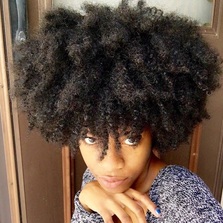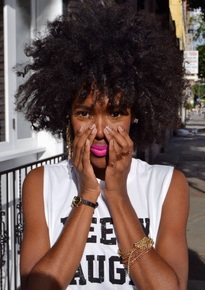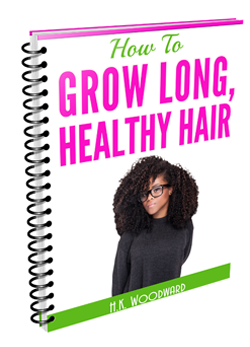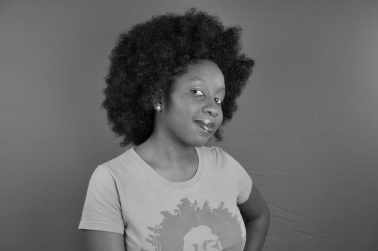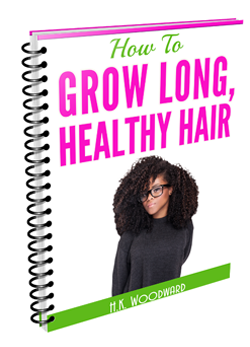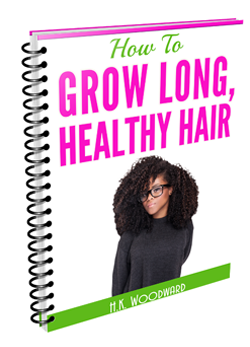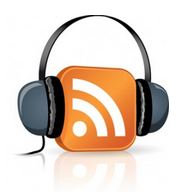
Firstly, why does your hair need any special care in the winter? Plain simply because it's cold and the cold has a tendency to dry hair out. Also, have you ever seen a leaf on a very cold day. It's brittle, I think my hair strands are much more vulnerable than leaves so I'll always spare them exposure to the cold.
So what are your options? 1. Throw a hat and scarf over your head when you go out This simply creates a barrier between the extremely cold weather outside and your temperature-sensitive hair. This is especially useful when your hair is too short to pin in or pin up. 2. Wear completely protective, low manipulation hair styles Completely protective hair styles keep the ends of your hair completely out of site. The best completely protective hair styles are:

This has two benefits:
a. You hair strands are stronger bound together than they are when they're "freely floating". Think about it this way, what's easier to break a single tooth pick or ten tooth picks bunched together. The same applies to your hair. b. The second benefit is that your hair get a break from being combed. Combing is great for detangling hair but it is also the biggest opportunity for breakage. 3. Wear completely protective hair styles You can obviously hide your hair without plaits by:
These are a good alternative to the completely protective, low manipulation hair styles. Remember, it's not just the weather you're protecting your hair from but also the central heating system; hiking the heating in your house up also dries out hair. Also, even outside of winter when it is raining or winding think "protective hairstyle". You might also like: Taking Care of Natural Hair Under A Weave or a Wig 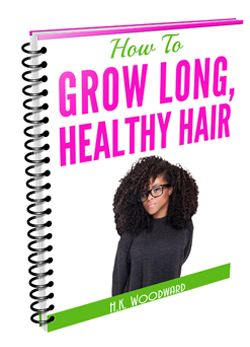
Get your FREE ebook on How To Grow Long, Healthy Natural Kinky or Curly Hair.
By Xotica Hair
Your summer is filled with exciting vacation plans no doubt; plans which don’t include twisting your hair at night. Yes, you love your natural hair, but sometimes you need a vacation from the daily maintenance as well. So whether your plans include sightseeing in Europe with bae or island hopping with your girls, here are three vacation proof natural hair ideas! Ghana Braids Source: Instagram @thatdynamitechick Source: Instagram @thatdynamitechick
Incorrectly popularized as "boxer braids", Ghana braids or cornrows are having a moment in popular culture and it’s no great wonder to natural hair girls who have been rocking them for years.
These braids are super easy to install and will keep your hair in formation from the plane to the beach. You can experiment with colors and length for a fun vacation look with no day to day maintenance. Just wrap it up or sleep on a silk pillowcase and spend that extra hair prepping time soaking up some sun! Full Sew-In Source: Instagram @jacqueamadi Source: Instagram @jacqueamadi
Another vacation proof hairstyle is a full sew-in weave. Even when all of your hair is covered in salt and sand, you can still maintain your signature natural look.
Using premium extensions, you will get perfect permanent curls without having to manipulate your own hair, and maintenance is super easy as well. Pineapple the hair at night and shake and go in the morning. You’ll look like a million bucks every day without spending a million hours perfecting your look! Box Braids Source: Instagram @bkmsang Source: Instagram @bkmsang
These take some time to install but the outcome is just gorgeous.
Box braids are many naturals’ go to protective style - and for good reason! They look pretty and polished and can be pulled up or manipulated into different styles with ease. You can take them for a dip in the pool and go to dinner without redoing your hair. And best of all, they last for months. Talk about vacation proof! By Xotica Hair www.xoticahair.com Natural Hair Growth Tip 12 - What is protective styling and why is it important for growth?24/2/2016

Your hair is always growing: fact.
On average, hair grows 1/3 to 1/2 an inch per month so you should get 4 to 6 inches of growth every year. Protective styling involves using styles that protect and hide your ends from damage so that you retain more length. How long can you expect your hair to continue growing for? On average 4 to 7 years. Everyone has a different growth cycle. This means that if your growth cycle is 4 years and your hair grows at 4 inches a year your maximum potential is 16 inches. This means that you cannot aspire to have more than 16 inches of growth ever. With trims this should be about 13 to 14 inches. Now, some people have a really short growth cycle of 1 year, 4 to 7 years is just average and the lucky few have a growth cycle of upto 10 years. Those long-haired people that make it to the Guinness book of world records probably fall into the latter category. Even with 4 inches per year, 10 years of growth is 40 inches of hair - wowza! If you feel like your hair is not growing it simply means your hair is not retaining length, that is, it is breaking off at the ends or you have reached your maximum possible. So if you have a 1 year cycle at 4 inches per annum then 4 inches is your maximum potential growth, genetically. This is very rare, you probably have a longer cycle. Will your hair grow longer if you use protective styling rather than if you don't? Yes and no. If you use protective styles and all your other hair care practices are poor then your hair won't grow to its maximum potential. For instance if you keep braids in for far too long and forget to wash and moisturise them regularly. Or if you use excessive amounts of heat and have an atrocious diet then your hair will suffer. However, if you take care of hair and make smart use of protective styles then you will retain more length 
 Click for Queen Samantha's hair styles, journey & regimen Click for Queen Samantha's hair styles, journey & regimen
At some point, we have all made these mistakes. Managing natural hair is very different to managing relaxed and it does take a little time to get the hang of it so don't worry if you're still learning.
1. Not Moisturizing Daily Our hair is naturally very dry. If you moisturize it in the morning, it will be dry by evening especially if it’s a very warm day and you were wearing your hair loose. To keep your hair soft you need to moisturize it daily with water, a good moisturizer and if it needs it, an oil or butter to seal. 2. Thinking Protective Hairstyles Are Only For Winter Protective styles protect your hair especially the ends from breaking and splitting. Our hair is most vulnerable when it’s flying loose rather than when it is pinned up, bunched up in a twist or in a braid. In winter, the air can be very dry and the wind intense so protective styling helps to prevent exposure to these extreme elements. In the summer, if it’s hot but not humid your hair can also get very dry so protective styling is actually ideal for both extremes. In fact, I find my hair gets more dry and even wiry on very hot days rather than in winter. You should use protective styling whenever the weather is too hot, too cold or windy because it helps with all extreme weather changes that make hair more vulnerable.  Click for Queen Kiki's hair styles, journey & regimen Click for Queen Kiki's hair styles, journey & regimen
3. Following Someone Else’s Regimen Without Adapting It For Your Own Hair
It’s completely normal to do this. Especially for someone who had relaxed hair for as long as I did, you don’t know what to do with natural hair. You end up following your favourite YouTuber or your best friend because you don’t know what else you should be doing. What you should be doing is trying everything out and if it doesn’t work on your hair: changing it, adapting it or ditching it until you discover what works for you. 4. Not Trimming So many people in the natural hair community are so obsessed with length that they don’t trim at all. The result is that they have thick roots but if they pull a bunch of hair out they only have 5 strands at the longest length. In some cases it can look a little extreme (and even silly). Trimming hair helps with health and growth. Neaten the ends up when they get messy or trim a little to neaten every 4 to 6 weeks as standard. 5. Braiding & Weaving Too Often  Click for Queen Courtney's hair styles, journey & regimen Click for Queen Courtney's hair styles, journey & regimen
I absolutely have nothing against braids and weaves. However, your hair does need a rest.
If you move from one set of braids or one weave to the next without a two week gap, at least, in between, you don’t get to observe your hair’s condition. Your hair edges could be getting thinner and thinner and the extensive plaiting may also be thinning your hair out. This was the reason I went natural to begin with. Combining braids and relaxer thinned my hair out very badly. By having a gap between braids I discovered the issue and took what was at the time the drastic measure of going natural. 6. Prioritizing Length Over Health & Enjoying The Journey Being natural shouldn’t be about your next length goal because that sucks the fun out of it. Whatever length of hair you have, enjoy it. I have never had a length goal, only a desire to keep my hair healthy. Of course everyone wants to observe growth but if that is your sole focus then you won’t enjoy the days when you’re in a TWA or transitioning. Just enjoy it! 7. Not Developing An Anti-Tangle Regimen As Hair Grows As your natural hair grows it will get more tangles and your regimen has to change to accommodate that. Your wash routine and your night time routine especially have to account for the fact that loose strands will tend to tangle and it will drive you mad.
Can you think of more treacherous mistakes that we make? Then make a comment.
 I'm not a regular wig wearer but I was inspired by the below picture to get one. I shared a picture I saw Facebook, lo-and-behold someone recognised the person in the picture, tagged them and she revealed that, it was not her hair, it's a wig. I asked where she got it, she asked the friend who she borrowed it off and that is how I found myself on one cold March afternoon at LeBelle in Woolwich (12 Beresford Square, Woolwich, London, SE18 6BA) buying an afro wig. I need a break from combing my hair and the weather has been horrible so for the next 4 to 6 weeks I plan to have corn rows.
 Protective styling is all about retaining more length and retaining hair moisture. There are three types of protective styles: 1. Completely protective styles Hide the ends of hair from view. Hair ends are the oldest segment of hair on your head and also the weakest. Hiding them from view can help to reduce breakage. When your hair is pulled together it's much less vulnerable. Think about it this way: is it easier to break one toothpick or ten bunched up together? The answer is the same for hair. 2. Low manipulation protective styles May have the ends exposed but they require little day-to-day hair handling. Handling such as combing, blow drying and styling hair is when breakage normally occurs. When my hair was short I could pull a comb through it with zero resistance. Nowadays tangling is such a big issue for me. Frequently with a twist/braid-out or a roller set you can go two or three days without having to restyle your hair thus giving it a break. 3. My favourite hairstyles are both completely protective and low manipulation. This category is also great when you are transitioning and still figuring out how to manage your natural hair. When your hair is plaited in some way it gets a proper break and you completely forget about whether or not it's "growing". Ideally, I want to spend most of next year in braids. My only worry is that I have to comb my hair properly to get it plaited and I don't usually do that; I enjoy far less breakage under a minimal comb regime. Finger combing only turned out to be a bad idea for me. EXAMPLES!
 4. Hats and scarves This is a subcategory of completely protective styling. For most of 2011 my hair was too short to be pinned down so I wore hats and scarves over my head whenever I was outside. Seriously, I am so obsessed about my hair being covered that one day I walked out the house with it exposed my husband shouted "your hair's not covered" like I was about to drop a baby or something. I had to explain that my ends were hidden so it was okay to walk between the house and the car without a hat. In summary, the whole aim of protective styling is to reduce opportunities for breakage by keeping hair ends hidden and retaining more hair moisture. Opportunities for hair breakage increase when hair strands are dry and isolated, i.e. not tied up, when hair ends are exposed to environmental elements (sun, wind, cold) and when you're "handling" your hair. If you are trying to grow long hair consider using protective styling more often. Protective styles are especially helpful during winter, when it is very hot outside and when the central heating makes a room very dry.  Get your FREE ebook on How To Grow Long, Healthy Natural Kinky or Curly Hair. 
Braids and cornrows are a protective style.
Braid care starts before you actually go for your appointment. The day before, wash and deep condition your hair so that it's at its strongest before you braid your hair. Afterwards the following tips will help you to minimise breakage and other forms of damage. 1. Take care of the edges For the first seven days after you've put the braids in you need to ensure that the edges that were more than likely pulled tightly are always moisturised. This will ease the pressure and will stop the roots from being uprooted. I apply oil around the edges twice a day initially because my scalp is sensitive and usually breaks out in little bumps. 2. Ensure your scalp never gets dry The scalp is carrying an extra load so to ease its burden ensure it is clean and never dry. Some people will naturally produce enough oil so they don't need to add extra but none the less I like to spray Neno Natural's Hair Growth Stimulator so that I get the benefits of the essential oils. 3. Wash every 7 to 10 days Not washing and conditioning your hair when it's in braids will lead to a lot more breakage when you take them out. Natural hair continues to crave moisture whether it's in braids or not. 
4. Moisturise the braid as though it were your hair There are two ways to do this: a) Spritz with water regularly just like you would when you have your hair out. b) Rub a shea butter onto the braids every few days. Overall, the more you think of the braids as your hair the better your own hair will fare. 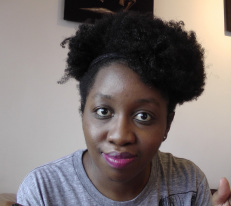
Did you know that keeping you hair off your shoulders is in itself a protective measure?
Hair can struggle to grow past the shoulders if it's constantly having to rub against clothes and chairs. The rubbing movement weakens the ends causing split ends and an increased risk of breakage. The problem is exacerbated if the tips of your hair are not properly moisturised. When I learnt the benefit of keeping my hair off clothes I changed the range of styles that I wear a little: instead of having an afro roaming free all the time I pull my hair up using a hair band, clip or plaiting one large corn row sideways from one side of my head to the other. Updos are a great of way of getting hair off clothes. Short hair is naturally protective in that it doesn't reach your clothes anyway. The only worry then becomes protecting hair ends from the elements: sun, wind, cold and air conditioning.
Pinning style for:

Bobby pinning hair is not a skill that comes naturally to me.
I used a bobby pin for the very first time when I decided to go natural in 2011. To begin with, it was impossible to pin my hair up because I didn't have much but within about six months I had enough 'material' to work with. As an amateur, I used lots of pins to keep my hair down and even then, it still looked loose. Over time, however, I am getting better. I'm yet to become a master but I'm well on my way. Currently, it only takes two pins on each side of my head to keep my hair in place with one hair comb at the back.  Hair comb Hair comb
My top five tips on pinning hair up successfully are:
1. Wipe your hands if they are oily; 2. Similarly, when your hair is too oily, the pins will slip out so don't overdo it with the hair oils; 3. Make sure the hair is tightly bunched up and hold it in place before picking up the pin; 4. Open the bobby pin very slightly using your forefinger (a.k.a. the pointing finger) and then push the pin where you want the hair to hold; 5. I usually place the first pin into my hair after I have folded the hair over twice then I place another pin after two more folds. If the pins are inserted correctly, the hair will hold even if you haven't pinned all the strands at the end. To be on the safe side, I fold the remaining hair until the base of my head and insert a hair comb before pinning up the other side of my head. My hair is still on the short side right now so I expect my technique to change when I have more hair to deal with. Follow me @NenoNatural and check out Neno Natural's Haircare Store. |
I now blog about wealth creation - so if you have any money questions meet me there, you can do all sorts of cool things like leave me a voicemail.
By Heather Katsonga-Woodward
I was a natural hair blogger and mixtress living between London & Chicago from 2012 to 2017. I always thought I was 4C but some say 4B; images below - you decide! Heather xx Categories
All
Archives
November 2016
|

